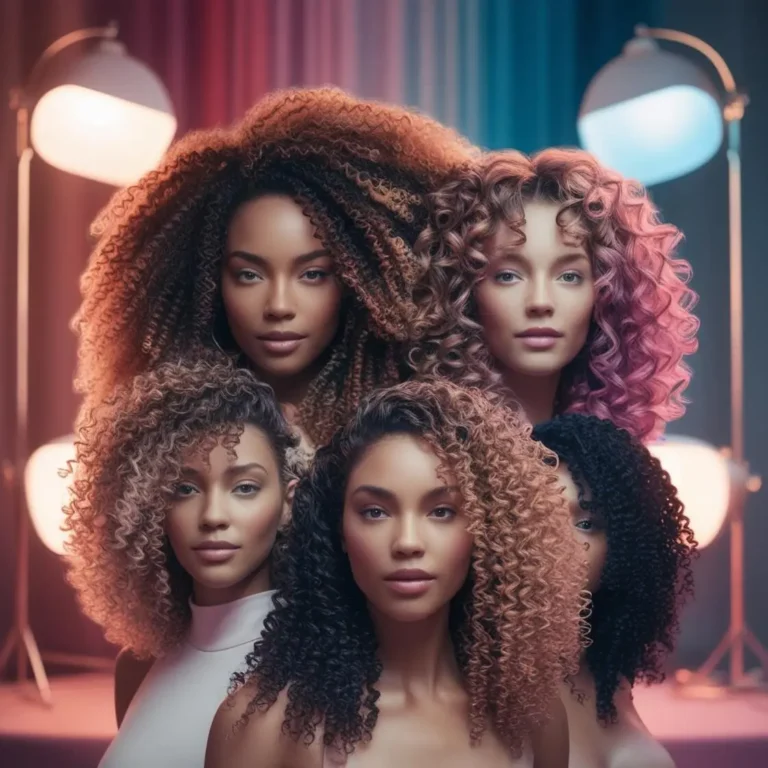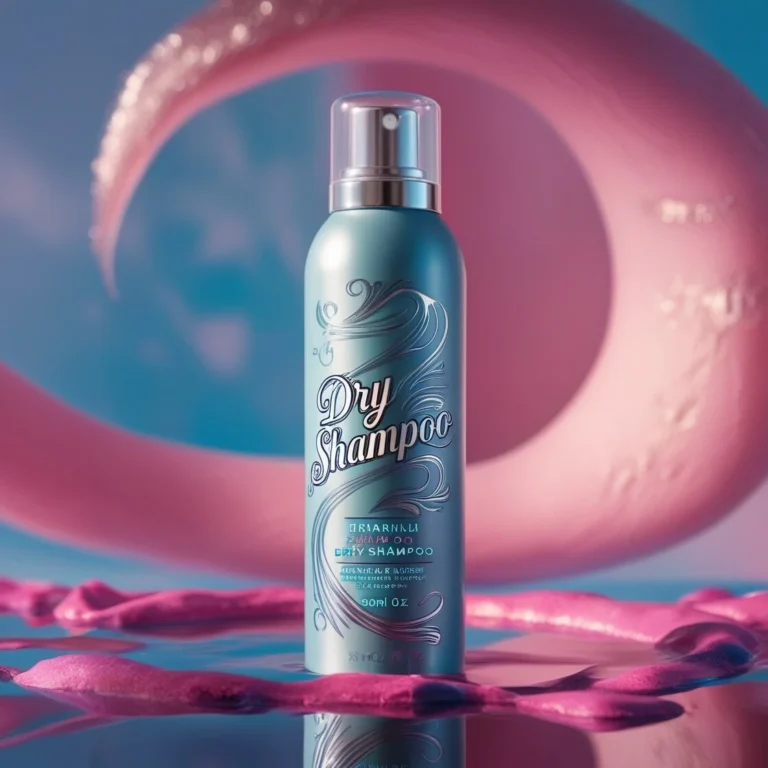Frizz is a common hair concern that affects people of all hair types, from straight to curly. It can make hair look untidy, dry, and hard to manage, especially in humid conditions. However, with the right care and products, it’s possible to tame frizz and keep your hair smooth and shiny. In this article, we’ll explore what causes frizz and the most effective ways to eliminate it, leaving your hair looking sleek and manageable.

Index
Understanding What Causes Frizz
Frizz happens when the hair cuticle—the outer layer of the hair shaft—becomes raised. This raised cuticle allows moisture from the environment to enter the hair shaft, causing the strands to swell and look unruly. Several factors contribute to frizz:
- Humidity: When there’s moisture in the air, particularly in humid environments, hair is prone to absorbing that moisture, causing it to swell and frizz.
- Dryness: Dry hair is more likely to frizz because it lacks the moisture necessary to keep it smooth and manageable. Hair that is naturally dry or that has been stripped of its natural oils through over-washing, heat styling, or chemical treatments tends to frizz more easily.
- Hair Damage: Damaged hair, whether from heat styling, chemical treatments, or environmental stressors like pollution and sun exposure, often experiences frizz because the cuticle has been weakened and raised.
- Hair Texture: Curly and wavy hair textures are naturally more prone to frizz because their structure makes it easier for the cuticle to lift. However, straight hair can also experience frizz under certain conditions.
Understanding these causes is key to eliminating frizz and achieving smooth, healthy hair. With the right care routine, you can manage and reduce frizz significantly.
The Importance of Moisture
One of the most effective ways to combat frizz is to keep your hair well-moisturized. Hair that lacks moisture is more susceptible to frizz, as it tends to absorb moisture from the environment. When your hair is adequately hydrated, it is less likely to frizz and will remain smoother.
Using a moisturizing shampoo and conditioner is a great first step in keeping frizz at bay. Look for products that are sulfate-free, as sulfates can strip the hair of its natural oils, leading to dryness. Additionally, deep conditioning treatments can provide an extra boost of moisture, especially if your hair is dry or damaged.
Leave-in conditioners and hair oils are also helpful in locking in moisture and keeping the cuticle smooth. Argan oil, coconut oil, and jojoba oil are particularly effective in providing hydration and sealing the hair cuticle, helping to prevent frizz. Applying these products to damp hair can make a significant difference in reducing frizz and improving manageability.
Heat Styling: Friend or Foe?
Heat styling tools such as blow dryers, flat irons, and curling wands can either help or harm when it comes to frizz. When used correctly, heat styling can smooth the hair and reduce frizz. However, excessive or improper use of heat can cause damage, leading to more frizz in the long run.
If you regularly use heat styling tools, it’s essential to take precautions to protect your hair. Always apply a heat protectant spray before using heat tools. This product creates a barrier between your hair and the heat, preventing damage to the cuticle and keeping your hair smooth.
Additionally, avoid using heat tools on very high settings. While it may be tempting to use the highest heat setting for faster results, it can cause significant damage to your hair. Instead, use a moderate heat setting and be patient. Investing in high-quality tools with temperature control settings can also help minimize the risk of heat damage.
For those who prefer to avoid heat altogether, there are many heat-free styling methods that can reduce frizz. Air-drying your hair, using hair wraps, or trying braids overnight can help you achieve smooth styles without the risk of damage from heat.
Anti-Frizz Products: What to Look For
There are countless products on the market that claim to eliminate frizz, but not all are created equal. Understanding which ingredients and formulations are most effective for frizz control can help you choose the right products for your hair.
- Silicones: Silicones are commonly found in anti-frizz serums and sprays because they create a protective barrier around the hair shaft, locking in moisture and smoothing the cuticle. While silicones can be effective in the short term, it’s important to note that they can build up on the hair over time, leading to dullness. Look for lightweight, water-soluble silicones like dimethicone or cyclopentasiloxane for frizz control without the buildup.
- Natural Oils: Oils like argan, coconut, and olive oil are excellent for fighting frizz. These oils not only provide moisture but also help to smooth the hair and add shine. Unlike silicones, natural oils nourish the hair over time, improving its overall health.
- Leave-In Conditioners: Leave-in conditioners are lightweight, hydrating treatments that you can apply to damp hair after washing. They help detangle, moisturize, and smooth the hair, making them a great option for daily frizz control.
- Anti-Humidity Sprays: If you live in a particularly humid climate, anti-humidity sprays can be a game-changer. These products form a barrier on the hair, preventing moisture from penetrating the cuticle and causing frizz.
When choosing anti-frizz products, it’s important to consider your hair type and specific needs. Fine hair may benefit from lightweight serums, while thicker, coarser hair may require richer oils or creams.
Managing Frizz in Different Hair Types
Frizz affects different hair types in various ways, and understanding your hair’s texture and needs can help you develop an effective anti-frizz routine.
- Straight Hair: While straight hair isn’t as prone to frizz as curly or wavy hair, it can still frizz, especially in humid conditions. Lightweight serums or sprays are often sufficient for keeping straight hair smooth. It’s also essential to avoid over-washing, as stripping the hair of its natural oils can lead to dryness and frizz.
- Wavy Hair: Wavy hair often experiences frizz due to its unique texture. To control frizz, wavy-haired individuals should focus on moisture-rich products like leave-in conditioners and lightweight oils. Air-drying is often the best option for reducing frizz in wavy hair, as excessive heat styling can exacerbate the problem.
- Curly Hair: Curly hair is naturally more prone to frizz due to its coiled structure, which makes it more difficult for natural oils to travel down the hair shaft. Curly-haired individuals should use hydrating shampoos, conditioners, and oils to keep their curls moisturized. Avoid brushing dry curls, as this can cause breakage and frizz. Instead, use a wide-tooth comb on wet hair to detangle.
- Coily Hair: Coily hair, like curly hair, is highly prone to frizz due to its tight curl pattern. This hair type benefits most from deep conditioning treatments, hair masks, and rich oils that provide intense moisture. Coily hair should be handled with care, as it is more fragile and susceptible to breakage.
Understanding your hair type and using the right products and techniques can go a long way in eliminating frizz and keeping your hair smooth.
Healthy Hair Habits to Reduce Frizz
In addition to using the right products, adopting healthy hair care habits can significantly reduce frizz over time. Here are some key practices to keep in mind:
- Avoid Over-Washing: Washing your hair too frequently can strip it of its natural oils, leading to dryness and frizz. Most people only need to wash their hair 2-3 times per week, depending on their hair type and lifestyle.
- Cold Water Rinse: After shampooing and conditioning, finish with a cold water rinse. Cold water helps to seal the hair cuticle, locking in moisture and reducing frizz.
- Microfiber Towels: Regular towels can cause friction and frizz when drying hair. Instead, use a microfiber towel or an old T-shirt to gently squeeze out excess water from your hair.
- Satin Pillowcases: Sleeping on a cotton pillowcase can create friction and cause frizz. Switching to a satin or silk pillowcase reduces friction, helping to keep your hair smooth overnight.
- Regular Trims: Split ends can contribute to frizz, so it’s essential to trim your hair regularly to maintain healthy, frizz-free strands.
By incorporating these habits into your routine, you can keep frizz under control and maintain smooth, healthy hair.
Conclusion: Embrace a Frizz-Free Hair Journey
Frizz can be a frustrating issue, but with the right approach, it’s possible to eliminate it and enjoy smooth, manageable hair. From moisturizing your hair properly to using the right products and adopting healthy habits, there are many strategies you can implement to control frizz. Whether you have straight, wavy, curly, or coily hair, there’s a solution that will work for you. By understanding what causes frizz and making informed choices about your hair care routine, you can achieve the sleek, frizz-free look you’ve always wanted.
Incorporate these tips into your hair care regimen, and soon you’ll notice a significant reduction in frizz, leaving you with healthy, beautiful hair.



